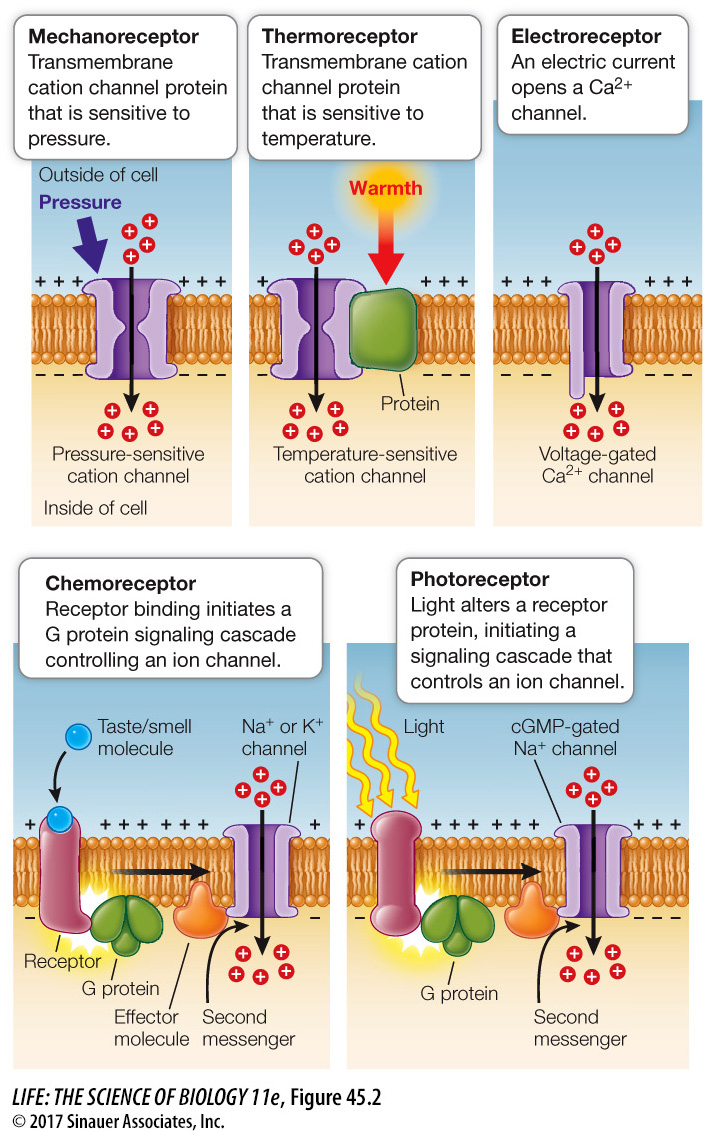Sensory receptor proteins act on ion channels
Sensory receptor proteins respond to stimuli by directly or indirectly opening or closing ion channels in the sensory cell (Figure 45.2), leading either to an action potential or to the release of neurotransmitter. Those sensory receptor proteins that act directly on membrane potential are either ion channels themselves or directly affect the opening of an associated ion channel. Examples are receptors that respond to physical force (mechanoreceptors) and those that respond to temperature (thermoreceptors). Electroreceptors do not have receptor proteins, but their cell membranes are sensitive to voltage changes and respond to depolarization by opening voltage-

A recently discovered superfamily of receptor proteins is the focus of considerable research in an effort to identify the molecular mechanisms by which infrared signals are detected. Transient receptor potential (TRP) channel proteins generate a large initial response to a stimulus and then gradually fade even as the stimulus remains constant. Seven classes of TRP channels have been identified, along with about 28 different molecular structures. Each type of TRP channel is specialized to respond to a different stimulus, such as stretch, pressure, temperature, light, and certain chemicals. Some respond to both physical and chemical stimuli, such as one that responds to heat, capsaicin (an active ingredient in chili peppers), and wasabi. Could a heat-